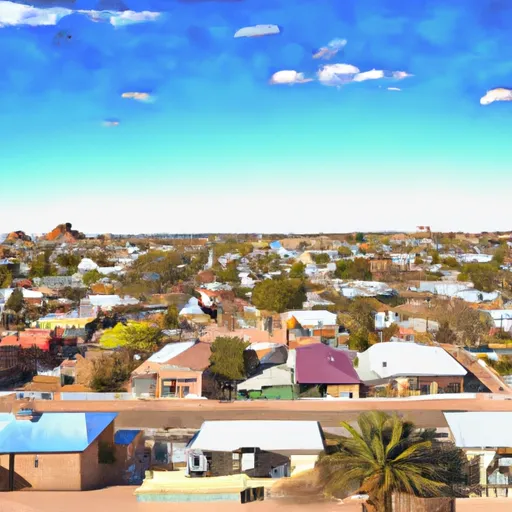-
 Snoflo Premium
Snoflo Premium
Get unlimited access to all our content
With no Ad interruptions! - Start Your Free Trial Login with existing account
Kaibito
Eden Index
Climate
8.4
•
Recreation
•
Community
0.6
•
Safeguard
3.5/10

Kaibito is a small unincorporated community located in Coconino County, Arizona. Situated on the Navajo Nation reservation, it experiences a semi-arid climate characterized by hot summers and cool winters. Summers in Kaibito can be scorching, with temperatures often exceeding 100°F (38°C), while winters are mild to cold, with occasional snowfall.
Hydrologically, Kaibito is part of the Colorado River Basin. The Little Colorado River, a tributary of the Colorado River, flows about 20 miles east of the community. This river system plays a vital role in the region's water resources, providing for agriculture and drinking water needs.
Outdoor recreation opportunities in Kaibito are abundant. The area is surrounded by stunning natural landscapes, making it ideal for hiking, camping, and wildlife viewing. Nearby attractions include the Kaibito Plateau, which offers breathtaking views and opportunities for off-road adventures. Additionally, the nearby Lake Powell, a popular destination for boating, fishing, and water sports, is located just a short drive away.
In summary, Kaibito, Arizona, offers a semi-arid climate, a connection to the Colorado River Basin, and numerous outdoor recreation opportunities, making it an appealing destination for nature lovers and outdoor enthusiasts.
What is the Eden Index?
The Snoflo Eden Index serves as a comprehensive rating system for regions, evaluating their desirability through a holistic assessment of climate health, outdoor recreation opportunities, and natural disaster risk, acknowledging the profound impact of these factors on livability and well-being.
Climate Health Indicator (CHI): 8.4
Kaibito receives approximately
230mm of rain per year,
with humidity levels near 36%
and air temperatures averaging around
12°C.
Kaibito has a plant hardyness factor of
6, meaning
plants and agriculture in this region thrive during a short period during spring and early summer. Most
plants will die off during the colder winter months.
By considering the ideal temperature range, reliable water supplies, clean air, and stable seasonal rain or snowpacks, the Climate Health Indicator (CHI) underscores the significance of a healthy climate as the foundation for quality living.
A healthy climate is paramount for ensuring a high quality of life and livability in a region, fostering both physical well-being and environmental harmony. This can be characterized by ideal temperatures, reliable access to water supplies, clean air, and consistent seasonal rain or snowpacks.
Weather Forecast
Streamflow Conditions
Upper Colorado-Dirty Devil
Area Rivers
Upper Colorado-Dirty Devil
Snowpack Depths
Upper Colorado-Dirty Devil
Reservoir Storage Capacity
Upper Colorado-Dirty Devil
Groundwater Levels
Recreational Opportunity Index (ROI):
The Recreational Opportunity Index (ROI) recognizes the value of outdoor recreational options, such as parks, hiking trails, camping sites, and fishing spots, while acknowledging that climate plays a pivotal role in ensuring the comfort and consistency of these experiences.
Access to outdoor recreational opportunities, encompassing activities such as parks, hiking, camping, and fishing, is crucial for overall well-being, and the climate plays a pivotal role in enabling and enhancing these experiences, ensuring that individuals can engage in nature-based activities comfortably and consistently.
Catastrophe Safeguard Index (CSI):
The Catastrophe Safeguard Index (CSI) recognizes that natural disaster risk, encompassing floods, fires, hurricanes, and tornadoes, can drastically affect safety and the overall appeal of an area.
The level of natural disaster risk in a region significantly affects safety and the overall livability, with climate change amplifying these risks by potentially increasing the frequency and intensity of events like floods, fires, hurricanes, and tornadoes, thereby posing substantial challenges to community resilience and well-being.
Community Resilience Indicator (CRI): 0.6
The Community Resilience Indicator (CRI) recognizes that education, healthcare, and socioeconomics are crucial to the well-being of a region. The CRI acknowledges the profound impact of these elements on residents' overall quality of life. By evaluating educational resources, healthcare accessibility, and economic inclusivity, the index captures the essential aspects that contribute to a thriving community, fostering resident satisfaction, equity, and social cohesion.

